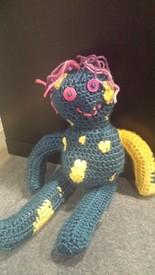Measuring rice and pasta - before or after cooking?

zyxst
Posts: 9,151 Member
It dawned on me last night that I'm probably wrongly measuring my pasta and rice servings. I usually measure them before cooking, then dish out half between my husband and myself. Am I supposed to measure after cooking?
0
Replies
-
I usually measure after cooking.0
-
Before. Most packages say dry, which means before adding the water and cooking it. 1/4 cup dry rice, 2 oz dry pasta. Hope this helps!1
-
Before. Most packages say dry, which means before adding the water and cooking it. 1/4 cup dry rice, 2 oz dry pasta. Hope this helps!
This. When cooked you are including water weight too.0 -
if you are making multiple serving of a food item, measure after cooking for the most accurate intake. mfp has info for both dry and cooked meausurments of pasta, rice, etc. make sure you choose accordingly
 0
0 -
I measure it dry. There is no calories in water2
-
Recipe amounts are shown before cooking. No idea about what people on MFP have put in their database, but it is usual to use the "before" amount. For instance, for 2 people I would cook 8 oz of rice in 1 1/2 pints of water.1
-
Thanks! At least I'm not alone in measuring before.
I will measure after cooking when I have guests over. It reminds me of my old job as a dietary aide. :P0 -
I measure before as well, not sure what the equivalent is, but 1 cup of dry pasta is too much for me1
-
when cooking rice the box is dry.. eg) minute rice is 1/2 cup dry = 1 cup cooked.... and is so many calories. So i always go by that, i will measure 1 cup when cooked and then place on my plate.0
-
Ways to be more accurate with pasta:
1. Measure before cooking. If you measure after cooking, you're measuring a variable amount of water.
2. Measure weight not volume. Cups are the devils measure and he'll slip in extra calories.
Do you have digital scales?2 -
You know...I thought my portions were extra small, but I never used to weigh my food before and just thought I was completely over indulging... Good to know!0
-
Then you'll be wrong. The values on the package refer to the dry weight. You'll be cheating yourself out of half your food this way.I will measure after cooking when I have guests over. It reminds me of my old job as a dietary aide. :P0 -
I usually measure after cooking.
***This0 -
if you are making multiple serving of a food item, measure after cooking for the most accurate intake. mfp has info for both dry and cooked meausurments of pasta, rice, etc. make sure you choose accordingly

I do the same as this..............dry weight if it's just for me and cooked weight if it's for the family.0 -
You can do it either way, just make sure you know it's the calories for dry or cooked. I measure cooked because I never make just one serving when i have a family to cook for also.
For example this morning I made a pot of brown rice.
1/4 cup dry is 160 calories
1 cup cooked is 2080 -
I weigh it before cooking.1
-
You should measure dry weight as cooked measurements can vary according to how you could your pasta...soft, aldente, etc....having a vary amound to water weight.1
-
ladyfingers39 wrote:
1/4 cup dry is 160 calories
1 cup cooked is 208
Cups are the devil's measure. Do you have digital scales?0 -
You can do it either way, just make sure you know it's the calories for dry or cooked. I measure cooked because I never make just one serving when i have a family to cook for also.
For example this morning I made a pot of brown rice.
1/4 cup dry is 160 calories
1 cup cooked is 208
This confuses me, do you cook it with added oils or butter?
Typically I cook brown rice w/ water, and last I checked water has no calories. The only difference between cooked and uncooked should be volume and weight, not calories. If it was 1/4 cup dry in, cooked w/ water and became 1 cup out, the calories should stay the same unless you added something.0 -
It doesn't work for me to measure before because I am making a whole box of pasta and then trying to eat one serving. However, most often I cannot find the cooked weights on my fitness pal. Any suggestions?0
-
CynthiaHartung wrote: »It doesn't work for me to measure before because I am making a whole box of pasta and then trying to eat one serving. However, most often I cannot find the cooked weights on my fitness pal. Any suggestions?
Weigh the pasta uncooked. Cook the pasta. Weigh the pasta again (drained). The cooked pasta has the same number of calories as the raw pasta, it's just heavier because of more water content. Because water content can vary (depending on cooking time, for example), the dry weight is more accurate as a gauge of calories.
Let's pretend you have 200g of raw pasta, maybe 740 calories. Cook it, now it's maybe 470g, but still 740 calories. Weigh your portion (cooked), let's stay that's 97g. You ate 97 divided by 470 of the pasta, or 0.206 of it, so the calories in your portion were 0.206 times 740, or about 152 calories. (I did some rounding in there.)
Yeah, that's arithmetic. Calorie counting has made me better at arithmetic, which is a useful skill in other ways. Double win, I know my calorie intake, and I'm better at arithmetic. 1
1 -
Mrp has calorie measurements for both cooked and uncooked rice. Select cooked if. You measured cooked rice. Select dry if you measured dry.2
-
CynthiaHartung wrote: »It doesn't work for me to measure before because I am making a whole box of pasta and then trying to eat one serving. However, most often I cannot find the cooked weights on my fitness pal. Any suggestions?
Do you search for pasta and then scroll to find cooked? Or do you search for "pasta, cooked"?
I have found entries for cooked pasta and rice
0 -
CynthiaHartung wrote: »It doesn't work for me to measure before because I am making a whole box of pasta and then trying to eat one serving. ... Any suggestions?
If you have a good food scale, measuring a single serving out of entire package is Math 101. If a whole box is 8 servings totaling 1600 calories, just weigh the cooked amount before adding sauce or anything else and figure out your portion. You could get fancy with the exact number in grams or just make it easy and figure out the fraction. If you divide the cooked weight by 8 you'd have one serving or 200 calories of pasta. If you know how many calories are in your entire sauce, just add that number to the cooked total and divide the same way.
0 -
CynthiaHartung wrote: »It doesn't work for me to measure before because I am making a whole box of pasta and then trying to eat one serving. However, most often I cannot find the cooked weights on my fitness pal. Any suggestions?
Why not just weigh out one serving and cook that? It uses less water, and you get FRESH pasta.
Pro tip: The instructions tell you to boil in a lot of water. You can use less water, and you can actually get it up to a boil, leave it for a minute, turn the heat off, put the lid on, and let it cook that way. It may take a couple minutes longer, and you can test it for doneness. This saves water and energy and makes it really easy to cook one serving (56 grams dry).0 -
CynthiaHartung wrote: »It doesn't work for me to measure before because I am making a whole box of pasta and then trying to eat one serving. However, most often I cannot find the cooked weights on my fitness pal. Any suggestions?
Why not just weigh out one serving and cook that? It uses less water, and you get FRESH pasta.
Pro tip: The instructions tell you to boil in a lot of water. You can use less water, and you can actually get it up to a boil, leave it for a minute, turn the heat off, put the lid on, and let it cook that way. It may take a couple minutes longer, and you can test it for doneness. This saves water and energy and makes it really easy to cook one serving (56 grams dry).
Another, not quite so precise option if you cook for someone else as well: Cook your pot of pasta. Serve the food to yourself and the other one. Count the serving spoons, like you 2, them 3. You know the calories of the whole pot, and now you only need 2/5 of it. This is how I lost weight.
If it's just for you but you cook for 2-3 days then it's the same but more precise. You know the calories of the whole put and lot the amount divided by the number of days. Yeah, you might be a bit over or under on one day, but it evens out on the second or third. This is also what I do with bread: weight the whole thing and divide by number of slices. No need to weight the slices every day.1
Categories
- All Categories
- 1.4M Health, Wellness and Goals
- 398.2K Introduce Yourself
- 44.7K Getting Started
- 261K Health and Weight Loss
- 176.4K Food and Nutrition
- 47.7K Recipes
- 233K Fitness and Exercise
- 463 Sleep, Mindfulness and Overall Wellness
- 6.5K Goal: Maintaining Weight
- 8.7K Goal: Gaining Weight and Body Building
- 153.5K Motivation and Support
- 8.4K Challenges
- 1.4K Debate Club
- 96.5K Chit-Chat
- 2.6K Fun and Games
- 4.8K MyFitnessPal Information
- 13 News and Announcements
- 21 MyFitnessPal Academy
- 1.6K Feature Suggestions and Ideas
- 3.2K MyFitnessPal Tech Support Questions
















